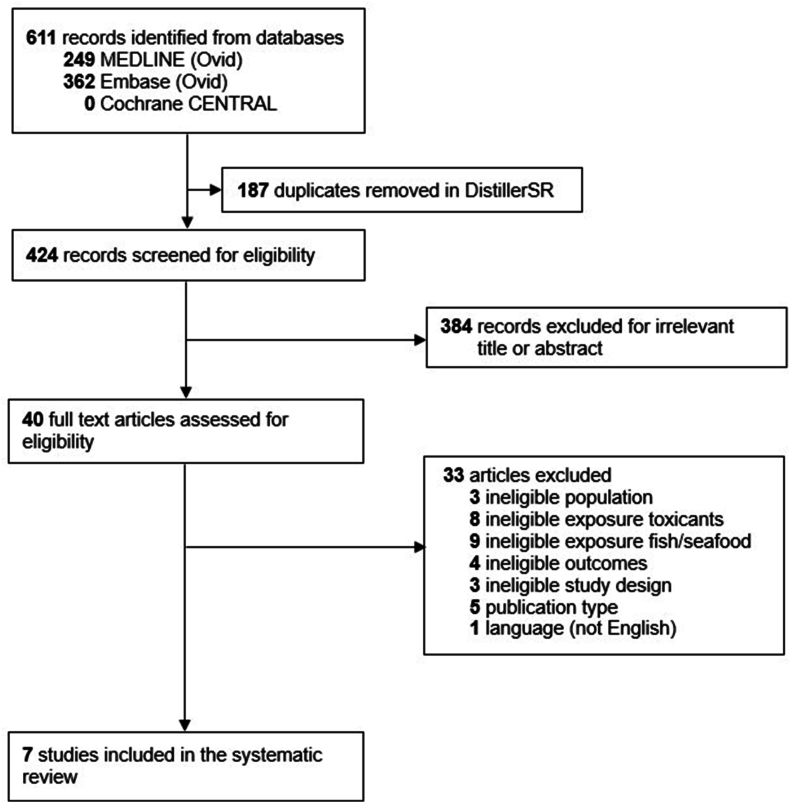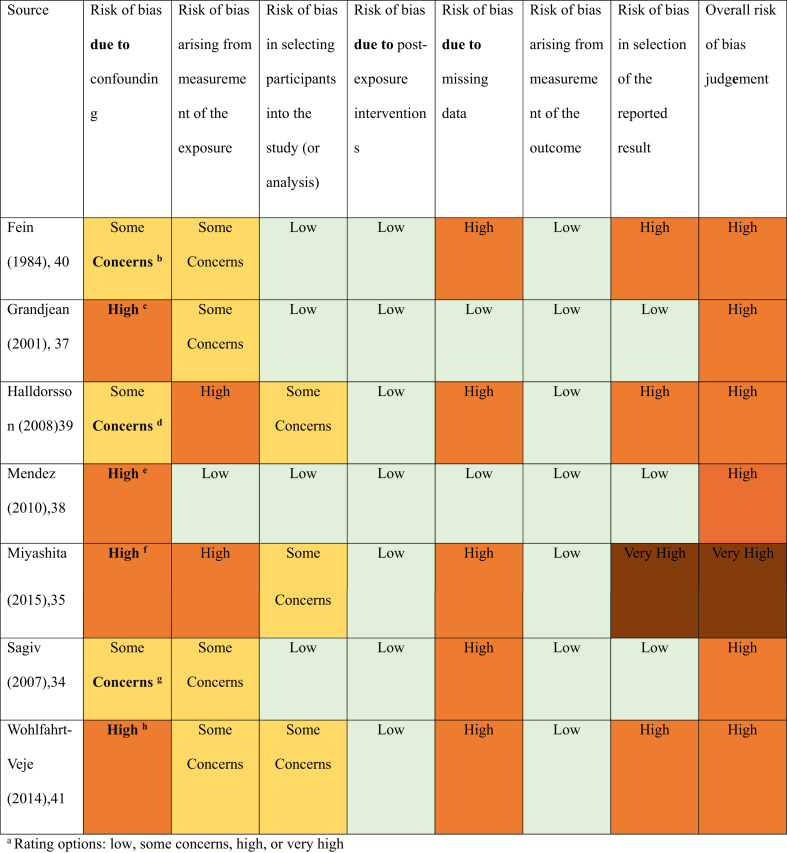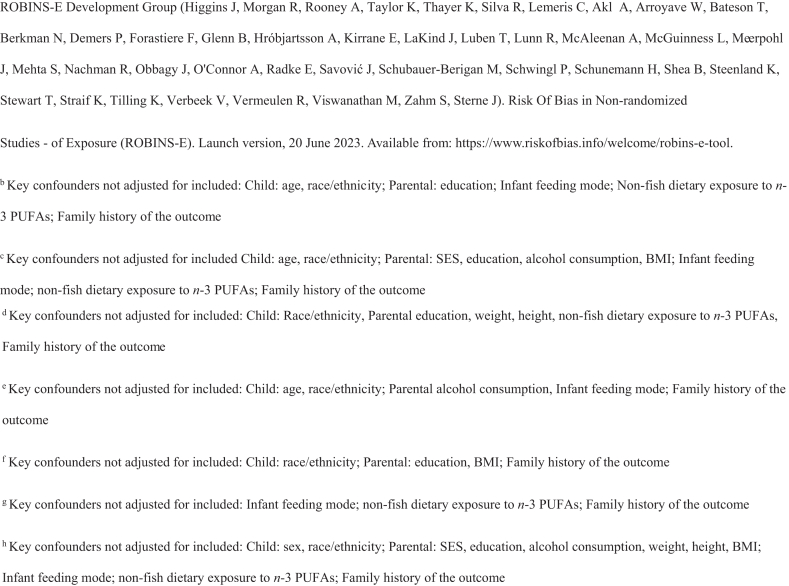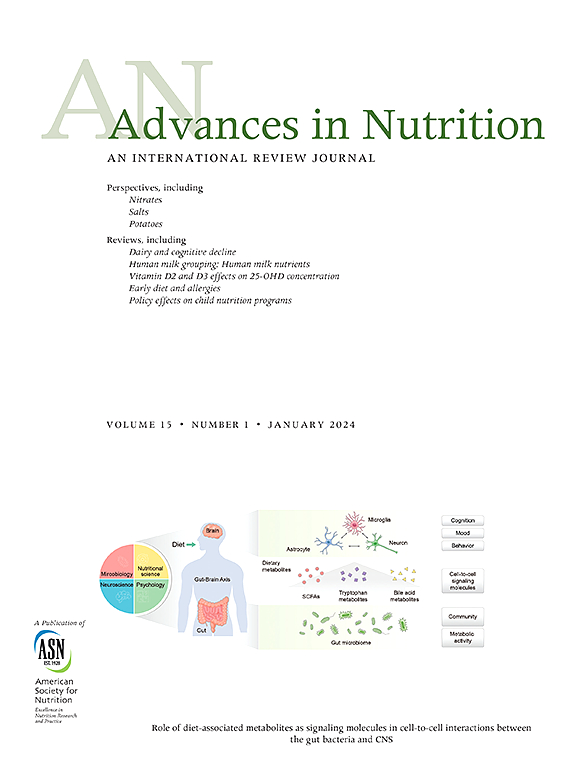Associations Between Maternal Polychlorinated Biphenyls (PCBs) Exposure from Seafood Consumption during Pregnancy and Lactation and Child Growth: A Systematic Review and Meta-Analysis
IF 9.2
1区 医学
Q1 NUTRITION & DIETETICS
引用次数: 0
Abstract
Beyond its nutritional benefits, seafood is a source of toxicant exposure including polychlorinated biphenyls (PCB). The association of PCB exposure from seafood intake during pregnancy and/or lactation (PL) and child growth outcomes is uncertain. This systematic review investigated the evidence and quantified the association between PCB exposure during PL from seafood intake and child growth outcomes. Embase, PubMed, and CENTRAL databases were searched from their inception for peer-reviewed English articles. Records were screened independently by 2 researchers at title and abstract, and then full-text levels. Studies were included if they: 1) were conducted in a country with a high Human Development Index, 2) measured maternal PCB exposure directly, 3) assessed the relationship between PCB and seafood exposures or PCB or seafood associations with a child growth outcome, and 4) were randomized or nonrandomized interventions, cohort, or nested case-control studies. Pooled partial correlations (rp) were calculated using random-effects models for studies with sufficient data and narratively for the remaining studies. Cochrane ROBINS-E and GRADE tools were used to assess risk of bias and certainty of evidence, respectively. Child growth outcomes included birthweight, birth length, head and chest circumference at birth, and small for gestational age (SGA). Seven studies were included. PCB exposure during PL was weakly but significantly associated with lower birthweight [rp = −0.07; 95% confidence interval (CI): −0.12, −0.02; n = 5], but showed no association with birth length (rp = −0.04; 95% CI: −0.09, 0.02; n = 4) and head circumference (rp = −0.03, 95% CI: −0.09, 0.03; n = 3). Studies on SGA and chest circumference yielded inconclusive results. The certainty of the evidence was low or very low because of the risk of bias from confounding, missing data, and exposure misclassification. The evidence suggests minimal to no link between PCB exposure from seafood during PL on child growth outcomes but with low to very low certainty.
This trial was registered at PROSPERO as CRD42023493302.



孕期和哺乳期食用海产品中母体多氯联苯(PCBs)暴露与儿童发育的关系:一项系统综述和荟萃分析
背景:除了营养价值,海鲜也是包括多氯联苯(PCB)在内的有毒物质暴露的来源。妊娠期和/或哺乳期(PL)海鲜摄入中多氯联苯暴露与儿童生长结局的关系尚不确定。目的:本系统综述调查了证据并量化了多氯联苯暴露与儿童生长结局之间的关系。方法:从Embase、PubMed和CENTRAL数据库开始检索同行评议的英文文章。记录由两位研究人员在标题和摘要,然后全文水平上独立筛选。如果研究是在人类发展指数高的国家进行的,ii)直接测量母体多氯联苯暴露,iii)评估多氯联苯和海产品暴露之间的关系,或多氯联苯或海产品与儿童生长结局的关联,iv)随机或非随机干预、队列或嵌套病例对照研究,则纳入研究。对于有足够数据的研究,采用随机效应模型计算合并偏相关性(rp),其余研究采用叙述性方法。使用Cochrane ROBINS-E和GRADE工具分别评估偏倚风险和证据确定性。儿童生长结局包括出生体重、出生长度、出生时头围和胸围以及小于胎龄(SGA)。结果:纳入7项研究。分娩期间多氯联苯暴露与较低出生体重有微弱但显著的相关性(rp =-0.07;95%ci: -0.12, -0.02;N =5),但与出生长度无关(rp=-0.04;95%ci: -0.09, 0.02;n=4)和头围(rp=-0.03, 95%CI: -0.09, 0.03;n = 3)。对SGA和胸围的研究结果不确定。由于混杂、数据缺失和暴露错误分类的偏倚风险,证据的确定性很低或很低。结论:有证据表明,在PL期间从海鲜中接触多氯联苯与儿童生长结果之间的联系很小或没有联系,但确定性很低或很低。系统评价或荟萃分析的注册中心和注册编号。该系统评价方案已在PROSPERO注册(CRD42023493302)。
本文章由计算机程序翻译,如有差异,请以英文原文为准。
求助全文
约1分钟内获得全文
求助全文
来源期刊

Advances in Nutrition
医学-营养学
CiteScore
17.40
自引率
2.20%
发文量
117
审稿时长
56 days
期刊介绍:
Advances in Nutrition (AN/Adv Nutr) publishes focused reviews on pivotal findings and recent research across all domains relevant to nutritional scientists and biomedical researchers. This encompasses nutrition-related research spanning biochemical, molecular, and genetic studies using experimental animal models, domestic animals, and human subjects. The journal also emphasizes clinical nutrition, epidemiology and public health, and nutrition education. Review articles concentrate on recent progress rather than broad historical developments.
In addition to review articles, AN includes Perspectives, Letters to the Editor, and supplements. Supplement proposals require pre-approval by the editor before submission. The journal features reports and position papers from the American Society for Nutrition, summaries of major government and foundation reports, and Nutrient Information briefs providing crucial details about dietary requirements, food sources, deficiencies, and other essential nutrient information. All submissions with scientific content undergo peer review by the Editors or their designees prior to acceptance for publication.
 求助内容:
求助内容: 应助结果提醒方式:
应助结果提醒方式:


